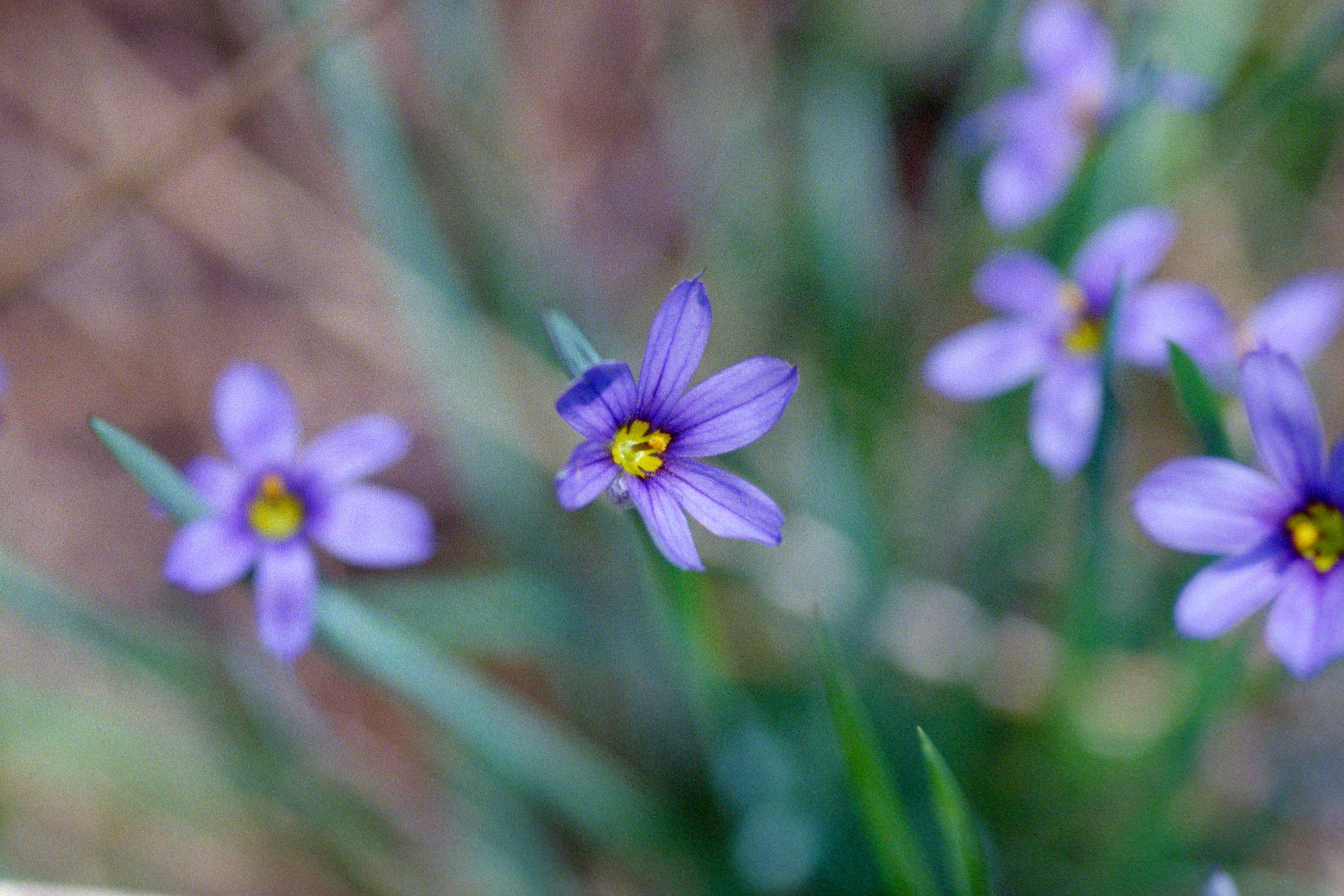Blue-eyed-grass
(Sisyrinchium montanum)

Description
Sisyrinchium montanum, the blue-eyed-grass, American blue-eyed-grass, or strict blue-eyed grass, is a grass-like species of plant from the genus Sisyrinchium, native to northern North America from Newfoundland west to easternmost Alaska, and south to Pennsylvania in the east, and to New Mexico in the Rocky Mountains. It has also been introduced to parts of France, likely during the First World War. It is very similar to S. angustifolium, with which it is sometimes combined. Sisyrinchium montanum is a herbaceous perennial plant that grows in clumps between 10 and 50 cm (4 and 20 in) tall. Its stems have wings with entire to finely toothed margins. The leaves and stem are slender, 3 mm (1⁄8 in) broad, green or brownish, with sharp edges and a fine point. The flowers are produced in a small cyme of two to five together emerging from a spathe, each flower about 2 cm (3⁄4 in) diameter, with six purplish tepals with a yellowish base and yellow stamens. The fruit is a capsule 4.5–6 mm (0.18–0.24 in) long, containing numerous small black seeds. Sisyrinchium is a large genus of annual to perennial flowering plant in the family Iridaceae. Native to the New World, the species are known as blue-eyed grasses and, though not true grasses and in varieties with flower colors other than blue, are monocots. Several species in the eastern United States are threatened or endangered. These are not true grasses, but many species have the general appearance of grasses, as they are low-growing plants with long, thin leaves. They often grow on grasslands. Many species resemble irises, to which they are more closely related. Most species grow as perennial plants, from a rhizome, though some are short-lived (e.g. S. striatum), and some are annuals (e.g. S. iridifolium). The flowers are relatively simple and often grow in clusters. Many species, particularly the South American ones, are not blue, despite the common name. The genus includes species with blue, white, yellow, and purple petals, often with a contrasting centre. Of the species in the United States, the Western Blue-eyed Grass, Sisyrinchium bellum, is sometimes found with white flowers, while the California Golden-eyed Grass, Sisyrinchium californicum, has yellow flowers. The genus was named by Carl Linnaeus in 1753, based on the species Sisyrinchium bermudiana (commonly called Bermudiana).
Taxonomic tree:







